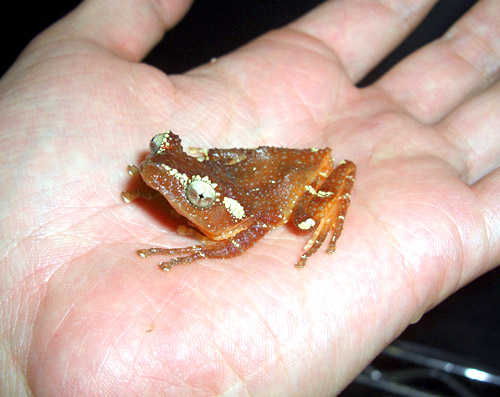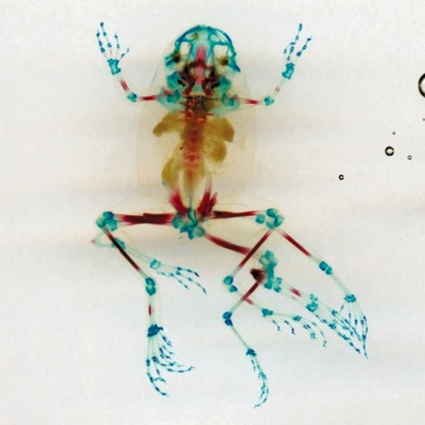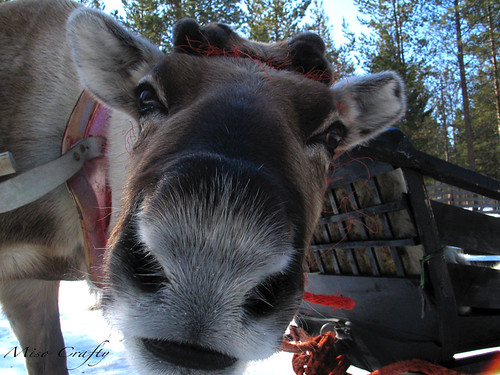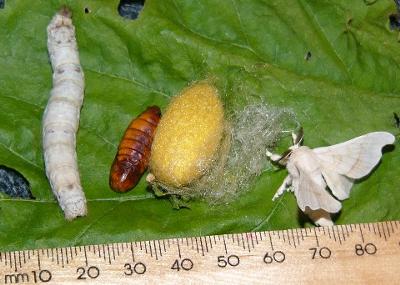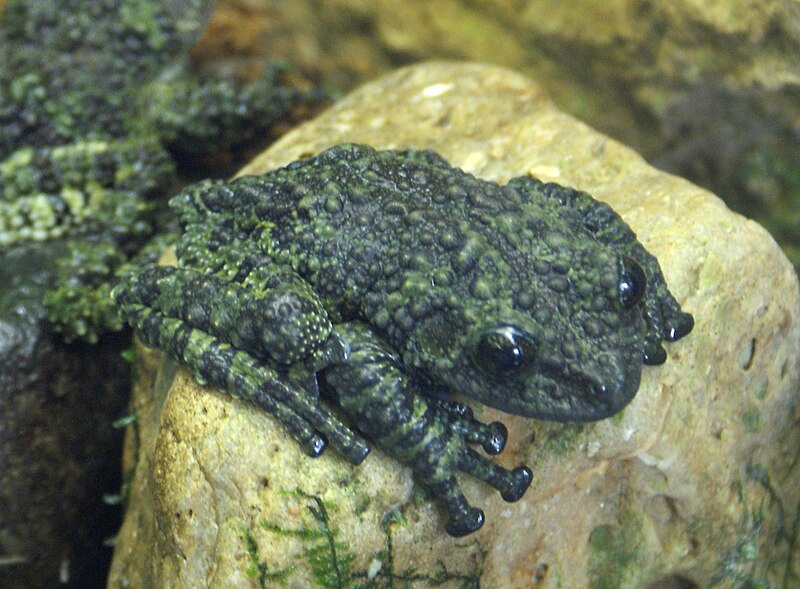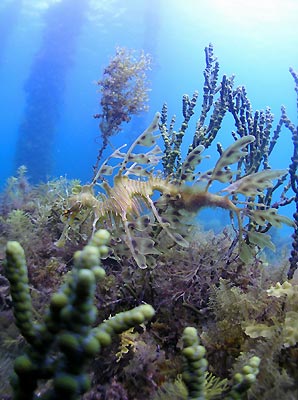So many amphibians, so little time. As frog week winds down and the new year comes to a close, I find myself wondering what to end the year on. Something subtly freaky would not cut it, no sir! Saving a more subtle frog for tomorrow meant that I HAD to do this one...

The hairy frog (Trichobatrachus robustus) is native to Central Africa. It eats any small, squirmy thing that will fit in its mouth. It is mostly a terrestrial frog, but lays its eggs in the water. If you see a "monster frog" or "horror frog" list, there is absolutely no doubt you will see this frog on there. Cameroon seems to have horror frogs besides this guy, too. Be afraid.
The species is, obviously, named for the 'hair' on the body and thighs of the male specimens. Yes, only the males have the species's namesake 'hair,' and even then, only in breeding season. The females are much smaller and lack the growths entirely. It's sorta like in humans where the ladies are nude, but the men can have hair anywhere.
The 'hair' on this frog is, as one probably guessed, not really hair. They are technically called "dermal papillae." In mammals, these would be a part of regular hair growth. In frogs, they're extended into what scientists think are 'gills' of sorts. They have arteries running through them and a lot of surface area, just like the gills of larval salamanders. Since the male spends quite a lot of time guarding the water-bound eggs before they hatch, it makes sense for him to have this bizarre beard.
As if hair wasn't weird enough, this frog is one of the rare frogs sporting retractable claws. These weapons come with a sinister kick: much like Wolverine's signature blades, the hairy frog's claws can only be unleashed if they poke through the frog's skin. They are not true claws, being all bone, but they still hurt predators quite a bit. This is officially a frog who thinks he is a cat. Or Wolverine, take your pick.
Oh, and people in Cameroon roast and eat this froggie. It's not endangered except by habitat loss, either. Hoppy New Year! *Shot for horrible pun.*

The hairy frog (Trichobatrachus robustus) is native to Central Africa. It eats any small, squirmy thing that will fit in its mouth. It is mostly a terrestrial frog, but lays its eggs in the water. If you see a "monster frog" or "horror frog" list, there is absolutely no doubt you will see this frog on there. Cameroon seems to have horror frogs besides this guy, too. Be afraid.
The species is, obviously, named for the 'hair' on the body and thighs of the male specimens. Yes, only the males have the species's namesake 'hair,' and even then, only in breeding season. The females are much smaller and lack the growths entirely. It's sorta like in humans where the ladies are nude, but the men can have hair anywhere.
The 'hair' on this frog is, as one probably guessed, not really hair. They are technically called "dermal papillae." In mammals, these would be a part of regular hair growth. In frogs, they're extended into what scientists think are 'gills' of sorts. They have arteries running through them and a lot of surface area, just like the gills of larval salamanders. Since the male spends quite a lot of time guarding the water-bound eggs before they hatch, it makes sense for him to have this bizarre beard.
 |
| Source: Blackburn, NewScientist. |
As if hair wasn't weird enough, this frog is one of the rare frogs sporting retractable claws. These weapons come with a sinister kick: much like Wolverine's signature blades, the hairy frog's claws can only be unleashed if they poke through the frog's skin. They are not true claws, being all bone, but they still hurt predators quite a bit. This is officially a frog who thinks he is a cat. Or Wolverine, take your pick.
Oh, and people in Cameroon roast and eat this froggie. It's not endangered except by habitat loss, either. Hoppy New Year! *Shot for horrible pun.*



